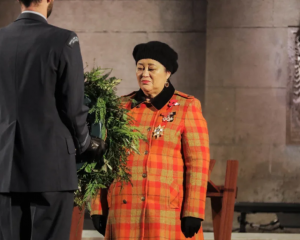
Auckland City councillors have voted today to support in principle a rahui, or exclusion zone, announced by West Auckland iwi Te Kawerau a Maki across the 16,000ha ranges park in a bid to curb the spread of kauri dieback disease.
After a lengthy debate, the council's environment and community committee noted the high importance of the protection of the Waitakere Ranges - the most heavily diseased area in New Zealand - and to work with Te Kawerau a Maki on ongoing protection.
Mayor Phil Goff and a majority of councillors did not support a full closure of the Ranges, with the mayor saying it would lead to perverse outcomes. Instead, the council is looking at a range of options, including closing some tracks and rebuilding others with boardwalks.
"We are on a war footing here ... it is a crisis. It is not something that can be dealt with piecemeal," said councillor John Watson.
A monitoring report showed the infection had jumped from 8 per cent to 19 per cent in five years, concentrated around where people walked.
Goff said the kauri tree was a symbol of New Zealand's native forest and the council needed to do everything to ensure it survives.
The council will now consider a big funding boost in its 10-year budget to fight the disease.
Said councillor Mike Lee: "This is a formidable enemy and we don't have all the answers for dealing with it."
The committee had five management options for the forest, which include giving up the fight, maintaining the status quo, ramping up work, closing all medium and high-risk tracks, and closing the park.
Waitakere Ranges Protection Society spokesman John Edgar believed the spread would only worsen if the entire park wasn't closed.
"It's a big thing to say we're going to close the ranges, but we have to do something drastic now," said Edgar, whose group stands with The Tree Council, Forest and Bird and the Friends of Regional Parks on the issue.
Iwi executive manager Edward Ashby acknowledged there was no statutory power to enforce the rahui, but hoped people would respect it.
"The tikanga back in the old days was that when mana whenua declared a rahui, they were essentially laying down a kind of tapu, and you'd be hard-pressed to find people who would enter those areas. Of course, times change, but we didn't have many options up our sleeves."
Iwi members had set up signs around the park and Ashby said there had been anecdotal reports of just half the typical number of people seen on the tracks since Saturday.
But there were no plans to confront visitors in the park and the iwi would be taking a "softly, softly" approach.
"As mana whenua, we have an obligation as guardians, or kaitiaki, but it really falls on the council to do something.
"This is an invisible organism, it can kill a mighty kauri tree, and there's absolutely no cure at all - so the only way we can avoid this spreading is by keeping people away."












